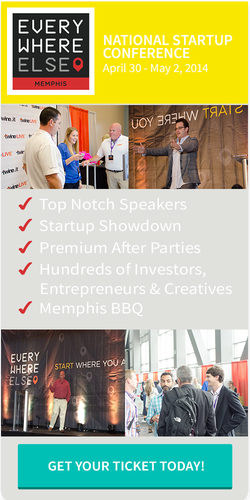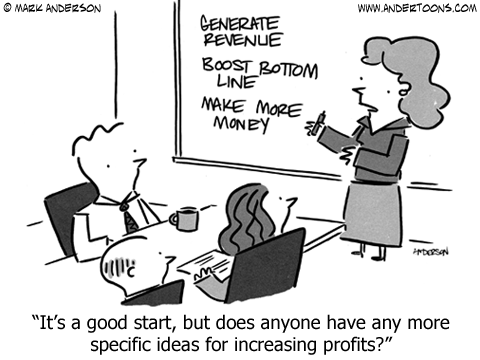
Maybe you are just thinking of starting a business. Or perhaps you have already begun, but are quickly realizing you can’t do everything yourself. If either of these scenarios sounds familiar, I’d like to share with you a great approach I’ve discovered for soliciting honest opinions without stepping on any toes — and learning which weaknesses I need to address, stat.
Only the Strong Survive
 Getting to know your strengths and weaknesses is easier said than done. Many of us think we’re great at certain things, whereas others would perceive us as being “C” or “D” students at best. So how do you get an accurate picture of your strengths and weaknesses, and why does it matter?
Getting to know your strengths and weaknesses is easier said than done. Many of us think we’re great at certain things, whereas others would perceive us as being “C” or “D” students at best. So how do you get an accurate picture of your strengths and weaknesses, and why does it matter?
Accuracy in perception is important. Knowing where you excel will guide you through your goal-making process, and knowing where you are weak will steer you towards the right moments to ask for help. Plus, if you know where you are weak, you can also figure out where your money will help you the most. For example, hire an accountant or bookkeeper if you’re not great with numbers. Hire a writer if the world of words doesn’t tickle your fancy. This method can even be applied to choosing a partner or team members, both which are very important aspects of the business-planning process.
How to Conduct a “No Blame” Survey
Start your self-assessment by making a simple list of every business skill you can think you have. Then, add other skills that you think make a good leader/business owner. Add any additional questions you think would be helpful.
To get you started, these are a few questions I ask my team to answer at the end of individual projects:
- Did I make you feel comfortable about making your own decisions pertaining to the tasks you were responsible for throughout the project?
- What could I have done on this project to be a better leader?
- What did you most appreciate about me as a leader throughout this project?
- What’s one thing you think we could do differently as a team on the next project?
- Now ask as many people as you dare to rate you in the same way through an anonymous survey. You can do this using an online surveying tool like SurveyMonkey, or use Forms in Google Drive.
Tell people not to put their name on it. This way, you won’t be offended by anyone’s opinion and they will feel safe to tell the whole truth. I’ll never forget a programmer’s expression when I asked him to fill out an anonymous survey about me so I could improve on my leadership and management skills. He laughed out loud and said, “Wow, you take this personal development stuff very seriously!” I do, and you should too.
Do not open any of the surveys until you’ve collected at least 10, and only ask people that know you or have worked with you directly.
Tip: Take a deep breath before you open them and keep an open mind about why you’re doing this: to become super-honest with yourself and to find teammates who can account for your weaknesses. I’ve personally had a few responses that left me wanting to scream, but I’m better for having received the honest feedback.
Knowing what you need to put energy into and where you can relax can mean the difference between a smooth ride and one full of potholes. Why not take the smooth road?
A Note for Survey Newbies
To find your range, look at all the results (except for your own) for one skill. Now write your lowest and highest score. That is your range. Ranges can tell you how much or little people agree about your results. If most everyone agrees (meaning a short range of numbers like 4-6), I would take that as good information and use it to your advantage.
To find your mean score (or “average”) you simply take all the results from one skill and add them together. After you get the total, write that number down. Now count how many survey respondents answered the question. You then divide the total score number by the total number of surveys filled out. This means if you scored 200 and 20 people filled out the survey, you scored a perfect 10! Your mean is helpful for finding an overall number, especially if the results are all over the graph.
There are many other ways to look at the information, but calculating the mean should give you a good overview of the answers you want. You will be ready to gain helpful insight for your business.
Now get out there, and ask away!
Natalie MacNeil is an Emmy Award-winning media entrepreneur, Founder of SheTakesOnTheWorld.com, and the bestselling author of She Takes on the World: A Guide to Being Your Own Boss, Working Happy, and Living on Purpose. SheTakesOnTheWorld.com was featured by Forbes on its list of “10 Best Sites for Women Entrepreneurs.”
The Young Entrepreneur Council (YEC) is an invite-only organization comprised of the world’s most promising young entrepreneurs. In partnership with Citi, YEC recently launched StartupCollective, a free virtual mentorship program that helps millions of entrepreneurs start and grow businesses.











 Five years ago, my first tech company was acquired. Two years ago, the acquirer IPO’d. As the Chief Strategy Officer, I ended my time at the company with a signatory bell ringing at the NASDAQ. Until that point, my life had moved quite swiftly without much vacation, only letting up to marry my high school sweetheart and raise my son.
Five years ago, my first tech company was acquired. Two years ago, the acquirer IPO’d. As the Chief Strategy Officer, I ended my time at the company with a signatory bell ringing at the NASDAQ. Until that point, my life had moved quite swiftly without much vacation, only letting up to marry my high school sweetheart and raise my son.



